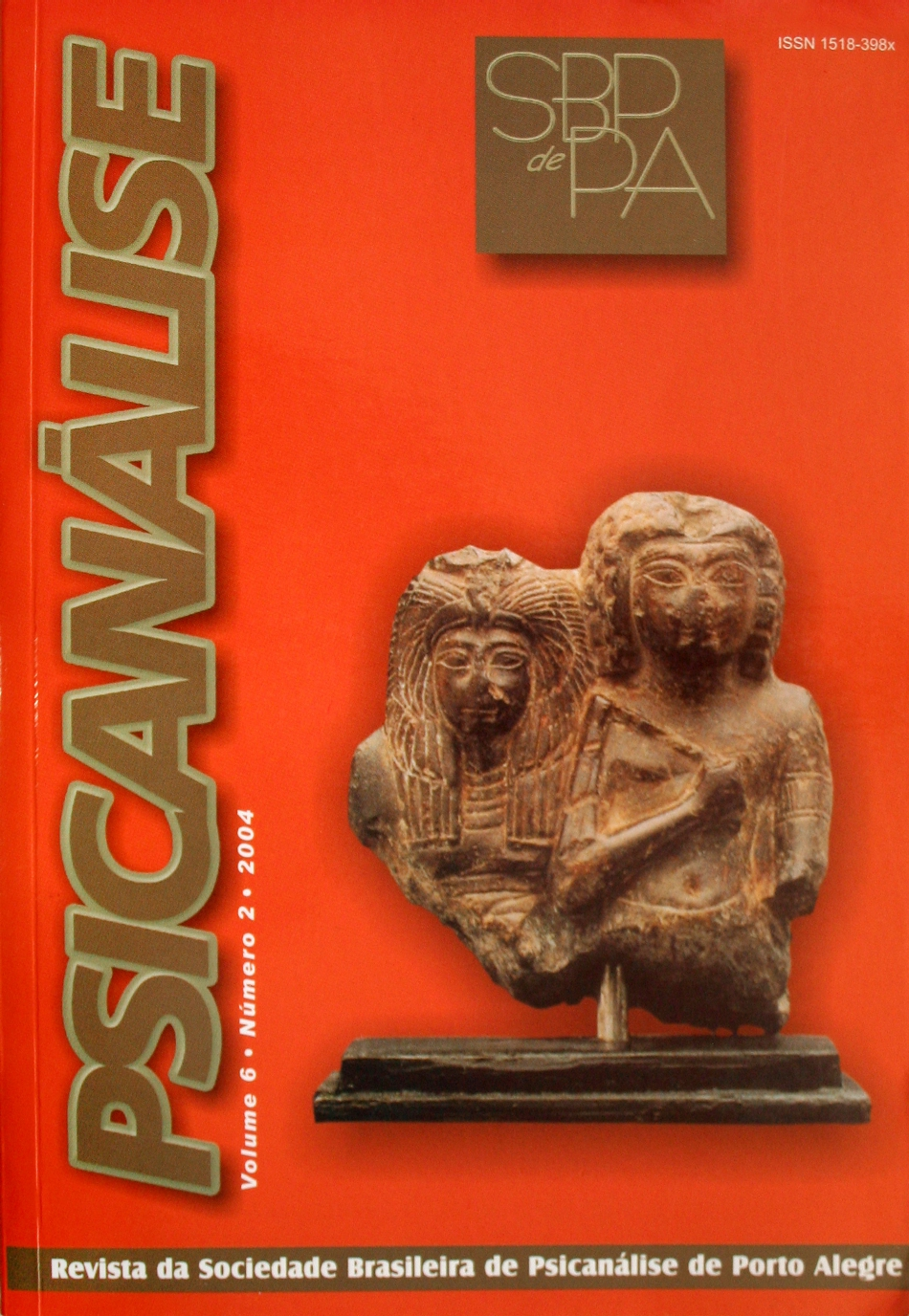Obsessive neurosis – “com pulsão”
DOI:
https://doi.org/10.60106/rsbppa.v6i2.163Keywords:
Compulsion, Obsessive neurosis, IsolationAbstract
This paper describes, initially, the compulsive phenomenon. Thereafter, the compulsion issue in the obsessive neurosis is discussed as well as its symptoms and phenomena. The author brings the film “As good as it gets” (in Brazil, “Melhor é impossível”) and some clinical topics in order to illustrate this work. These people’s difficulty in relationships and to deal with more violent feelings and fantasies conduct them to an isolation state. In the film, the main character’s desire of being with his love object shows a path of transformation and possibility in pulsion traffic, emphasizing life aspects, instead of the predominant deathly aspects of the compulsive repetition.
Downloads
References
BION, W.R. Transformações: mudança do aprendizado ao crescimento. Rio de Janeiro: Imago,1984.
BRUSSET, B.; COUVREUR, C. (Org.). A Neurose obsessiva. São Paulo: Escuta, 1993.
FREUD, S. (1909). Notas sobre um caso de neurose obsessiva. In: ______. Obras completas. Rio de Janeiro: Imago, 1980. v.10.
______. (1914). Recordar, repetir e elaborar. In: ______. Obras completas. Rio de Janeiro: Imago, 1980. v. 12.
______. (1920). Além do princípio do prazer. In: ______. Obras completas. Rio de Janeiro: Imago, 1980. v.18.
LACAN, J. O seminário: livro 4 : a relação de objeto. Rio de Janeiro, Jorge Zahar, 1998.
LAPLANCHE; PONTALIS. Vocabulário da psicanálise. São Paulo: Martins Fontes, 1992.
VALLS, J.L. Dicionário freudiano. Madrid: Julian Yebenes, S.A, 1995.
Downloads
Published
How to Cite
Issue
Section
License
I attribute the copyrights that belong to me, on this work, to SBPdePA, which may use and publish it by the means it deems appropriate, including on the Internet or in any other computer processing.
















